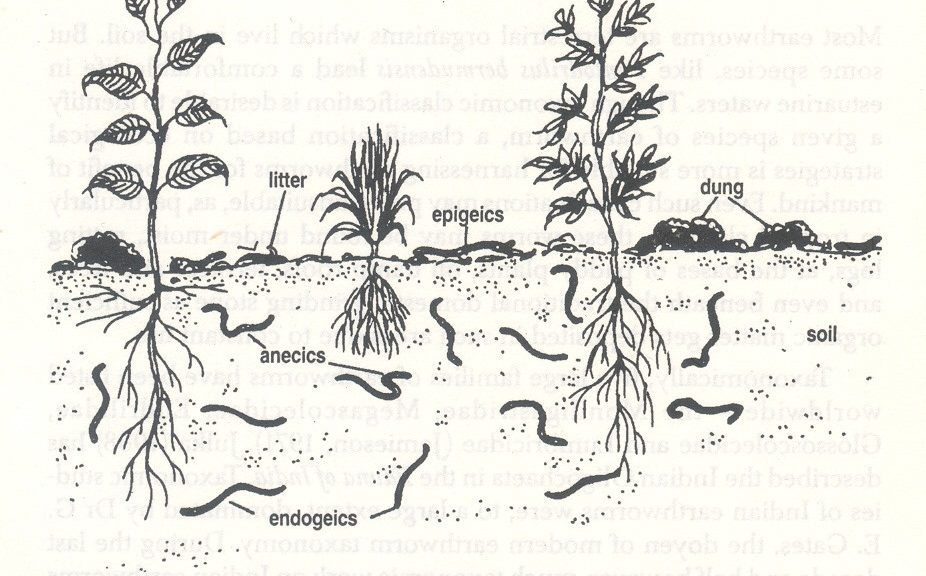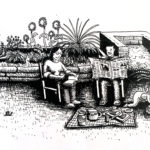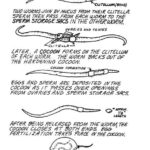
Earthworm Ecology – Epigeic, Anecic and Endogeic
(In-depth presentation below)
Earthworms can be divided into three main groups, called ecotypes, each of which describes a different ecological grouping based on its behaviour:
Epigeic earthworms live on the surface of the soil in leaf litter. These species tend not to make burrows but live in and feed on the leaf litter. Epigeic earthworms are also often bright red or reddish-brown.
Endogeic earthworms live in and feed on the soil. They make horizontal burrows through the soil to move around and to feed and they will reuse these burrows to a certain extent. Endogeic earthworms are often pale colours, grey, pale pink. Some can burrow very deeply in the soil.
Anecic earthworms make permanent vertical burrows in soil. They feed on leaves on the soil surface that they drag into their burrows. They also cast on the surface, and these casts can quite often be seen in grasslands. They also make middens (piles of casts) around the entrance to their burrows.
*Composting worms are mostly epigeics. As their name would suggest, these are most likely to be found in compost, or areas very rich in rotting vegetation and organic wastes. They prefer warm and moist environments with a ready supply of fresh compostable material. They can very rapidly consume these materials and also reproduce very quickly. Compost earthworms tend to be bright red or some blueish sheen in colour and stripy. Compost worms are often used to help dispose of waste as they can also remove contaminants from soil.





